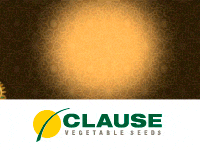Colombia: Europe, a market willing to pay more for quality
Elisa Plumed.
After two years of the Treaty of Peru-Colombia free-trade with the European Union, Colombia organized last June 18th an event in Bogotá to make balance of the period and to promote the opening of European markets in both Andean countries.
Political representatives of the three territories agreed the results of the Treaty have been very positive for everyone, but also became evident the need to promote it more.
“Historically, Colombia was a very closed country, but it’s worth opening the doors to improve the map of opportunities,” said Deputy Minister of Foreign Trade of Colombia, Mariana Sarasti, adding: “our current challenge is to expand the products.”
For its part, responsible for bilateral relations with Europe and North America the Deputy Minister of Foreign Trade of Peru, Teresa Mera, said “we can not speak of final figures, but in these two years if there are trends. The export to Europe of non-traditional products It has increased, primarily those related to micro-enterprises, agribusiness and metal-mechanics. ”
The head of the Unit for Latin America of the Directorate General for Trade of the European Commission, Matthias Jørgensen added. “We are in a moment of agreement implementation. A negotiation was launched in 2006, at a time of optimism for the global economy; it was held in crisis, between 2008 and 2010, culminating in the summit of CELAC in Madrid. Treaty began in 2013 and from now on it will be interesting to see what goes on.”
Although all political representatives showed the benefits of the agreement, greater enthusiasm and desire to promote was perceived by the European Union, adding interest to open it to Ecuador, Andean country which also began negotiations of this Treaty and ultimately didn’t finalise.
508 million European consumers
Despite the Treaty of free-trade is between Peru/Colombia and the European Union, since it was held in Bogotá there was a greater presence of Colombian institutions and companies.
Also, the agricultural sector was one of the highlights because, although the main Colombia and Peru exports to the EU are made up of oils from petrol or mining products, respectively, the food industry is one of the most increasing sales in European markets.
At this point, the representative of the Directorate General for Agriculture and Rural Development of the European Commission, Carlos Coronas, presented a key issue. “The European consumer is very demanding and there is much talk about how difficult it is to export to Europe. However, the European consumer is willing to pay a little more if the product has good quality, the consumer recognizes the value of certificates of origin, protected geographical indications, organic products, fair trade … From how many world markets can we say so?”.
Thus, Coronas noted that one of the keys to add value to exports from Colombia and Peru is to create and produce certified food under these quality brands.
The director of Ecocert (French certifier of organic products) in Colombia, Marie Mercui, explained that to produce organic food means selling more expensive. “This is an expanding market, since in the last ten years has quadrupled, being located 60% of its global sales in the United States, Germany and France”, explained Mercui.
The example that it is not impossible to accomplish it and that a small business can maket was showed by Fruandes, a Colombian SME focused on the production of organic dried fruits under the parameters of fair trade which exports 95% of its production to Europe and the United United.
Data on exports
The European Union was consolidated in the first year of entry into force of the comercial agreement as the second most important partner for Colombia and the first destination for the sale of several of its agricultural products and industries. Between August 2013 and July 2014 Colombia exported to Europe goods worth 8292.7 million euros, 10% more than the previous year.
Although over 72% of exports accounted oils from petrol and coals, marketing of bananas, coffee, flowers, palm oil, tuna, fresh fruit or sugar cane add a considerable 18%. [http://eeas.europa.eu/delegations/colombia/documents/press_corner/25-02-15-publicacion-primer-ano-de-entrada-en-vigorac-final-alta-resolucion.pdf]
Meanwhile, despite Peru has not definitive data, in 2013 it was clear that, like Colombia, products from mining and gas account for 75% of exports to the European Union, the food industry is the fastest growing as non-traditional products, especially coffee, cotton and fish flours.
http://eeas.europa.eu/delegations/peru/eu_peru/trade_relation/index_es.htm









